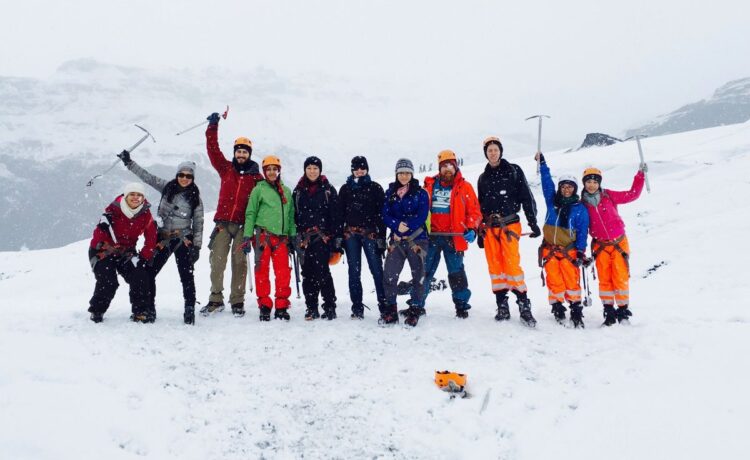Table of Contents
Introduction to Visiting Iceland

If you’re thinking about taking a trip to Iceland, you’re in for a treat. This little Nordic island nation’s breathtaking natural beauty, which includes glaciers, volcanoes, waterfalls, and geothermal hot springs, is well known. But before you make travel plans, it’s critical to consider the best time to travel to Iceland.
The timing of your trip might have a big impact on how you feel about it overall because the weather and quantity of daylight hours fluctuate throughout the year. In this thorough guide, we’ll look at the factors to consider when determining the best time to visit Iceland, covering weather and climate, outdoor activities, sightseeing alternatives, and tips for solo travelers.
Factors to Consider When Choosing the Best Time to Travel to Iceland
When selecting the best time of year to visit Iceland, there are several factors to take into account. One of the most important aspects is the weather, followed by temperature. The subarctic climate of Iceland has cold winters and pleasant summers. The country is also well known for its unpredictable, constantly shifting weather. Another factor to consider is how much daylight you will experience while there. Iceland has the midnight sun phenomenon, when the sun is visible all summer long. There are numerous chances for sightseeing and outdoor activities because of this. The days are significantly shorter and there are less daylight hours in the winter. This can affect how much time you have for investigation.
Weather and Climate in Iceland Throughout the Year

Knowing Iceland’s weather and temperature throughout the year is crucial for picking the best time to visit. The summer months of June through August have an average temperature of between 10 and 15 degrees Celsius (50 and 59 degrees Fahrenheit). This is recognised as the busiest travel season because of the pleasant weather and long days.
Be prepared for a range of weather situations as the summer may also bring wind and rain. In the winter, from December through February, temperatures can drop to between -2 and 3 degrees Celsius (28 and 37 degrees Fahrenheit). The Northern Lights may be seen at this time, but be prepared for colder weather and shorter days.
Best Time to Travel to Iceland for Outdoor Activities and Adventure
If you prefer outdoor activities and adventure, the summer is the best time to visit Iceland. The longer daylight hours and more pleasant temperatures will give you more time to take in the gorgeous surroundings and partake in thrilling activities. You may engage in a variety of exhilarating activities, such as hiking the famous Laugavegur Trail or kayaking among icebergs in the Jökulsárlón Glacier Lagoon. During the summer, there are opportunities to watch puffins and whales close to the coast. Just remember to pack the appropriate outdoor attire, as the weather may change quickly even in the summer.
Best Time to Visit Iceland for Sightseeing and Exploring the Natural Wonders

Depending on your preferences, the best time to visit Iceland if touring and taking in its natural beauty are your top objectives may vary. The benefit of longer daylight hours in the summer is that you’ll have more time to visit well-known locations like the Blue Lagoon, the Golden Circle, and the stunning waterfalls along the South Coast.
However, if you’re hoping to view the magnificent Northern Lights, winter offers your best chance. The perfect conditions for this natural phenomenon are clear sky and lengthy, dark nights. It’s vital to check the forecast and make arrangements appropriately because the weather might impact whether or not you can view the Northern Lights.
Solo Travel to Iceland: Tips and Recommendations

Iceland is a safe and welcoming destination for lone travelers. There are a few tips and rules to keep in mind to ensure a comfortable and enjoyable trip.
- Prior planning is essential, as is having a clear idea of the attractions you want to see. Despite the flexibility of traveling alone, making a firm plan might help you make the most of your vacation.
- Make sure you have clothing and equipment that are suited for the weather. In Iceland, where the weather may be capricious, it’s crucial to be prepared for any type of weather. Lastly, consider signing up for group activities or guided excursions to enhance your experience and meet other travelers. This will give individuals an opportunity to socialize and might also increase their convenience and safety.
Safety Considerations for Solo Travelers in Iceland
Despite the fact that Iceland is a generally safe nation, solo visitors should use caution. The weather in Iceland is a significant cause of security concerns. Strong storms and quick weather changes are probable, as was previously mentioned. It’s crucial to follow regional weather forecasts and obey any advice or warnings given by local authorities.
Stick on designated walkways and trails when exploring Iceland’s natural treasures. Leaving the designated route might be risky because the terrain can be dangerous. Take the usual safety measures as well, such as avoiding isolated areas at night and being cautious of your personal belongings. You may travel alone to Iceland in safety by being alert and aware of your surroundings.
Must-Visit Destinations in Iceland

- Reykjavik: The capital of Iceland is a flourishing, global metropolis with a beautiful combination of modern architecture and historical landmarks. Explore the Hallgrimskirkja cathedral, the renowned Harpa Concert Hall, and the busy streets dotted with shops, restaurants, and cafés.
- The Golden Circle: Along this heavily used route are three popular sights. Thingvellir National Park is a UNESCO World Heritage site renowned for its breathtaking landscape and historical significance. Next, go to the Geysir geothermal region to witness Strokkur geyser’s dramatic eruptions first hand. One of Iceland’s most stunning natural wonders, the spectacular Gullfoss waterfall, should also be marveled at.
- Jökulsárlón Glacier Lagoon: A photographer’s paradise, this stunning glacial lake is a part of Vatnajökull National Park. If you’re lucky, you might even be able to spot seals swimming among the brilliant icebergs as they quietly float in the ocean’s pristine water. Take a boat tour to get up close to the glacier and take in its mesmerizing splendor.
- The Blue Lagoon: One of Iceland’s most popular attractions, The Blue Lagoon, is a geothermal spa noted for its milky-blue waters that are packed with minerals. Relax in the warm, soothing waters while surrounded by an odd volcanic landscape. This unique and relaxing establishment offers spa services, mud masks, and other luxury amenities.
- The Snæfellsnes Peninsula: The Snaefellsnes Peninsula, sometimes referred to as “Iceland in Miniature,” is home to a variety of natural wonders and sceneries. Explore the stunning black sand beaches, majestic cliffs, and volcanic formations that make up this gorgeous location, as well as attractive fishing settlements like Arnarstapi and Stykkishólmur.

Frequently Asked Questions – FAQs
When is the best time to visit Iceland?
It depends on your preferences, but summer (June to August) is popular for mild weather and longer daylight hours, while winter (December to February) offers the chance to see the Northern Lights. Spring and autumn provide a balance between smaller crowds and favorable weather conditions.
Can I see the Northern Lights in Iceland?
Yes, Iceland is one of the best places to see the Northern Lights. Winter months, from September to April, offer the best chances of witnessing this natural phenomenon. It is recommended to stay away from light pollution in darker areas for better visibility.
What is the weather like in Iceland?
Iceland’s weather is unpredictable and can change rapidly. In summer, temperatures range from 10°C to 15°C (50°F to 59°F), while winter temperatures range from -3°C to 2°C (27°F to 36°F). Coastal areas are milder due to the Gulf Stream, while inland regions can be colder. Rainfall is common throughout the year, with October being the wettest month. Layered clothing is recommended to adapt to changing weather conditions.
Conclusion
In conclusion, the ideal time to visit Iceland will depend on your choices and the experiences you intend to have while there. Summertime is the best time for outdoor activities and adventure because of the extended daylight hours and cooler temperatures. On the other side, the winter season offers the chance to see the captivating Northern Lights. Iceland is a place that will astound you with its natural beauty whether you’re traveling alone or in a group. You may plan your trip to Iceland at the ideal moment and make experiences that will last a lifetime by taking the aspects listed in this comprehensive guide into consideration.

Read More Interesting Article
Your Ticket to Freedom: Places to Travel Without Passport
Best Time to Visit Canada: Top 10 Places for Memorable Vacations
Best Cities to Visit Australia: Discovering the Best Food, Culture, and Adventure
Italy Travel: Places to visit and tips for Exploring Italy’s hidden treasures
Japan Travel: Your Ultimate Travel Guide to Must-Visit Places and Best Time to Go
Top 10 Best Countries to Travel in 2023
10 Best Places for Free Dispersed Camping Colorado
10 Amazing Campgrounds – “Beach Camping Florida”
Top 10 Amazing Campgrounds – “Beach Camping California”
Top 10 Amazing Campgrounds – “Camping Oregon Coast”
Source and References for all the Image and videos are:
Photo by Rudolf Kirchner – [Image]
Photo by stein egil liland – [Image]
Photo by KúKú Campers – [Image]





